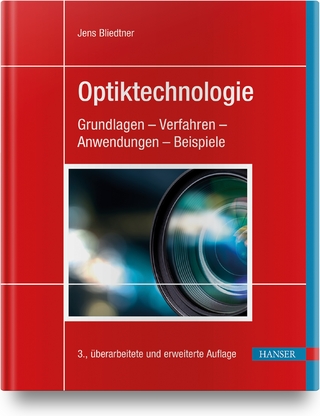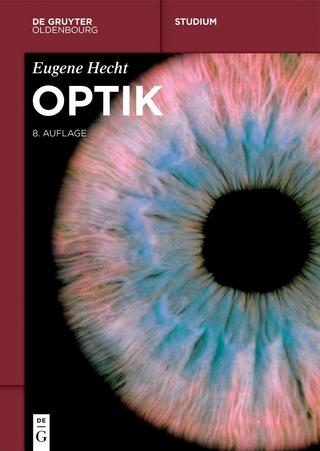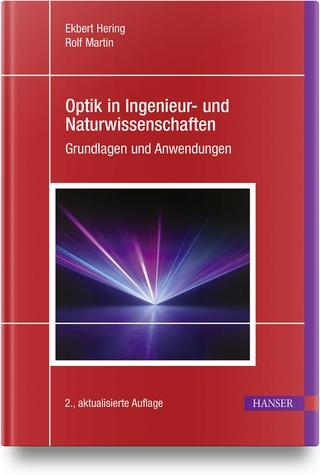
The Fire within the Eye
Princeton University Press (Verlag)
978-0-691-05051-5 (ISBN)
- Titel ist leider vergriffen;
keine Neuauflage - Artikel merken
In "The Fire within the Eye", scientist and author David Park helps us reconceive the everyday phenomenon of light in profound ways, from spiritual meanings embedded in our culture to the challenging questions put forth by great scientists and philosophers. Park, who is both a gifted teacher and physicist, takes us on a tour through history spanning ancient Greek, Neoplatonic, and Arabic philosophy together with astrology, the metaphysics of Galileo and Kepler, and the role of mathematics and experimentation in modern physics. By creatively synthesizing a broad sweep of historical events and intellectual movements around the theme of light, the author offers readers of all backgrounds a unique perspective on Western civilization itself.Readers will find themselves immersed in lively discussions conducted by a physicist equally at home exploring the invention of perspective by Brunelleschi and Alberti, the writings of Goethe, or the mathematical models inspiring Maxwell's electromagnetic theory. Plato made light the earthly counterpart of the Good; the early Christians believed the command "Let there be light" unleashed a power that shaped and energized the world.Park follows the connotations of spirituality and power attributed to light in religion, philosophy, art, and literature.
At the same time he enables us truly to feel the excitement surrounding scientific discoveries and debates about the nature of light throughout history - Isaac Newton's scientific explanation of color and the raging battles between proponents of light as particles and light as a wave.Park traces the attempts to define light, beginning in the nineteenth century with the proposal that light is a wave motion in a field that unites electricity and magnetism. How this theory was reconciled with the particle theory of light is one of many paradoxes that Park guides us in understanding. Park writes eloquently of the physical, aesthetic, and spiritual aspects of light, making this book an invaluable guide for all readers wishing to explore the fascinating relationship between science and culture.
David Park, Emeritus Professor of Physics at Williams College, has written books for specialists and general readers. The Image of Eternity and The How and the Why (Princeton) have both won Phi Beta Kappa's Science Book Award for the best books of their respective years written for the general public.
PREFACE xi ONE The Power of Light 3 1.1 Prospectus 3 1.2 The Roots of Matter 4 1.3 Atoms and Emptiness 7 1.4 Plato's Philosophy of Ideas 10 1.5 Aristotle's Philosophy of Desire 14 1.6 What Is Science, and How Do you Know It Is Right? 17 1.7 Planets Power the World, Light Stops a Planet 20 1.8 The Manichees: Light Defeated by Darkness 23 1.9 And There Was Light 27 TWO The Image and the Mind 33 2.1 What Color Is Green? 33 2.2 The Arrow from the Eye 34 2.3 A World Full of Images 35 2.4 Fire within the Eye 39 2.5 The Activity of What Is Transparent 41 2.6 Galen and the Stoics 44 2.7 Aristotle Takes Aim at a Rainbow 45 2.8 Three Theories of Vision 48 THREE Rays 51 3.1 What Are the Stars Saying? 51 3.2 Euclid Draws Pictures of Light 53 3.3 Hero Finds Economy in Nature 61 3.4 Ptolemy Studies Optics 63 3.5 Philoponus, the Last Greek Philosopher in Egypt 71 3.6 Alkindi's Web of Radiation 72 3.7 Alhazen Writes a Book 76 FOUR The Light That Shineth in Darkness 89 4.1 Plato and the Meaning of Light 89 4.2 Three Denises and the Ghost of Plato 92 4.3 Images of Heaven 93 4.4 Robert Grosseteste, Bishop of Lincoln 97 4.5 Species 100 Interlude on University Life 104 4.6 Roger Bacon Rebels 107 4.7 How Do I See What I See? 111 4.8 Two Doctors 114 FIVE The End of Classical Optics 119 5.1 Witelo, Also, Writes a Book 119 5.2 Where Did I Put My Glasses? 121 5.3 How to Paint Space 126 5.4 How to Draw Distance 130 5.5 Porta Asks a Question 136 5.6 Galileo the Investigator 139 5.7 "Light Is Created" 146 From Notes toward a Supreme Fiction, by Wallace Stevens 151 SIX A New Age Begins 153 6.1 Johannes Kepler, the Emperor's Mathematician 153 6.2 Paralipomena 160 6.3 Lenses and Species 164 6.4 Refraction: Willibrord Snel Improves on Ptolemy 171 6.5 Rene Descartes Invents a World 174 6.6 Fermat: A Mathematician Looks at Optics 182 SEVEN The Rise of Optical Experiment 187 7.1 Ole Romer and the Speed of Light 187 7.2 Father Grimaldi Avoids a Quarrel 189 7.3 Robert Hooke and the Royal Society 194 7.4 Isaac Newton's Theory of Color 197 7.5 Particles of Light 205 7.6 Opticks 208 7.7 Christiaan Huygens, the Dutch Master 215 7.8 The Rainbow Is Caught 221 7.9 James Bradley Goes for a Sail 226 EIGHT Enlightenment 230 8.1 The Eighteenth Century 230 8.2 The Musical Atoms of Leonhard Euler 235 8.3 Goethe Does Not Believe What He Reads 238 8.4 Goethe's Theory of Color 241 8.5 Light Is a Wave 245 8.6 Seeing Farther: Telescopes 254 8.7 Seeing Smaller: Microscopes 260 8.8 Learning from Color: Spectroscopy 264 NINE Unification 270 9.1 A World Floating in Ether 270 9.2 Faraday Imagines a Field 273 9.3 Maxwell: Electricity Plus Magnetism Gives Light 279 9.4 Hertz Finds the Electric Waves 286 9.5 The Vast Spectrum of Light 288 9.6 Trying to Find the Ether 292 9.7 Einstein Draws Conclusions 296 9.8 Eyes and Brains 303 TEN What Is Light? 310 10.1 Light Seems to Be a Particle 310 10.2 Niels Bohr Holds an Atom in His Hand 313 10.3 A New Kind of Understanding 317 10.4 Spooky Actions at a Distance 322 10.5 Instruments and Techniques 325 10.6 Then What Is Light? 332 10.7 Light and Shade 335 Michelangelo's Sonnet to Darkness 339 TECHNICAL TERMS 341 REFERENCES AND FURTHER READING 345 BIBLIOGRAPHY 357 INDEX 373
| Erscheint lt. Verlag | 2.5.1999 |
|---|---|
| Zusatzinfo | 37 halftones 71 line illus. 13 color illus. |
| Verlagsort | New Jersey |
| Sprache | englisch |
| Maße | 152 x 229 mm |
| Gewicht | 567 g |
| Themenwelt | Geisteswissenschaften |
| Naturwissenschaften ► Physik / Astronomie ► Optik | |
| Sozialwissenschaften | |
| ISBN-10 | 0-691-05051-1 / 0691050511 |
| ISBN-13 | 978-0-691-05051-5 / 9780691050515 |
| Zustand | Neuware |
| Haben Sie eine Frage zum Produkt? |
aus dem Bereich


